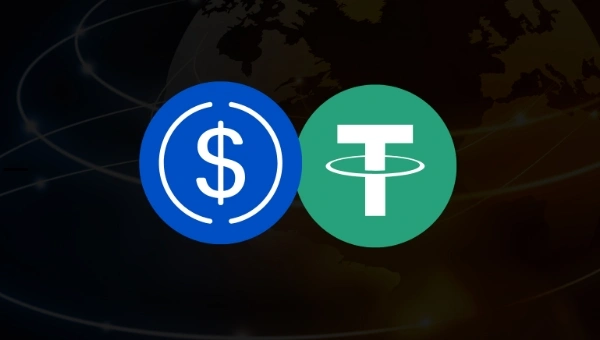

Crypto’s Unstoppable Momentum
For decades, major banks treated cryptocurrencies as a speculative sideshow, dismissing their volatility and regulatory risks. But the meteoric rise of stablecoins has changed the calculus.
In 2024, stablecoins facilitated $15.6 trillion in transactions, a volume that competes with legacy systems like ACH and wire transfers. Ignoring this trend is no longer an option, as fintech firms and crypto leaders like Tether and Circle capture market share.
Even tech giants like PayPal, with its stablecoin integrations, are forcing banks to act or risk being sidelined.
The proposed stablecoin will tap into existing payment infrastructures like The Clearing House and Early Warning Services, which power Zelle. By doing so, banks aim to deliver near-instantaneous transaction settlements, slashing the multi-day delays of traditional cross-border payments. This consortium approach allows banks to share resources and risks, creating a digital dollar that could extend beyond their own operations to other financial institutions.

Regulatory Clarity Lights the Path
Recent regulatory developments have paved the way for this venture. The U.S. Senate’s progress on the Guiding and Establishing National Innovation for U.S. Stablecoins (GENIUS) Act, which cleared a critical vote on May 19, 2025, offers banks a clearer framework. The legislation requires stablecoins with market caps over $50 billion to be fully backed by dollars and comply with anti-money laundering rules.
The GENIUS Act, championed by Senators Cynthia Lummis and Kirsten Gillibrand, reflects a growing consensus that stablecoins can strengthen the financial system while preserving the dollar’s global dominance. For banks, this environment reduces the risks of embracing crypto and allows them to integrate digital assets without fear of regulatory backlash.
This stablecoin initiative is a direct challenge to blockchain-based payment systems like Ripple’s XRP and Stellar’s XLM, which have gained traction for their speed and cost-efficiency. XRP, used by global financial institutions, settles transactions in seconds, while Stellar focuses on low-cost remittances, appealing to underserved markets.
Banks aim to reclaim control and ensure they remain central to the payment ecosystem.
Navigating Challenges and Seizing Opportunities
The path forward isn’t without obstacles. The stablecoin project is still in its infancy, and its success depends on regulatory outcomes and market acceptance. Critics, like NYU professor Austin Campbell, caution that stablecoins could erode traditional banking by diverting deposits and transaction volumes.
However, the consortium’s collaborative structure mitigates these risks, distributing challenges across multiple players.
This venture also highlights the convergence of traditional finance and crypto. As global players like Meta explore stablecoin integrations and countries like China advance central bank digital currencies, U.S. banks are positioning themselves as leaders in this transformation.
Their regulatory expertise and established networks give them an edge in creating a compliant, scalable digital dollar.
Shaping the Future of Payments
The joint stablecoin initiative marks a transformative inflection point for the traditional banking sector. It stands to deliver increased transaction efficiency and reduced costs for consumers, while offering major banks a strategic foothold in an increasingly blockchain-integrated economy. With JPMorgan Chase, Bank of America, Citigroup, and Wells Fargo at the helm, the initiative reflects a proactive effort to not only respond to digital currency trends but to help shape their trajectory.
Backed by a favorable regulatory climate and interbank collaboration, this project may serve
as a critical conduit between legacy financial institutions and emerging decentralized infrastructures.
He has worked with several companies in the past including Economy Watch, and Milkroad. Finds writing for BitEdge highly satisfying as he gets an opportunity to share his knowledge with a broad community of gamblers.
Nationality
Kenyan
Lives In
Cape Town
University
Kenyatta University and USIU
Degree
Economics, Finance and Journalism


Facts Checked by Vlad Hategan

 Fact checked by
Fact checked by 
 eabungana@gmail.com
eabungana@gmail.com 